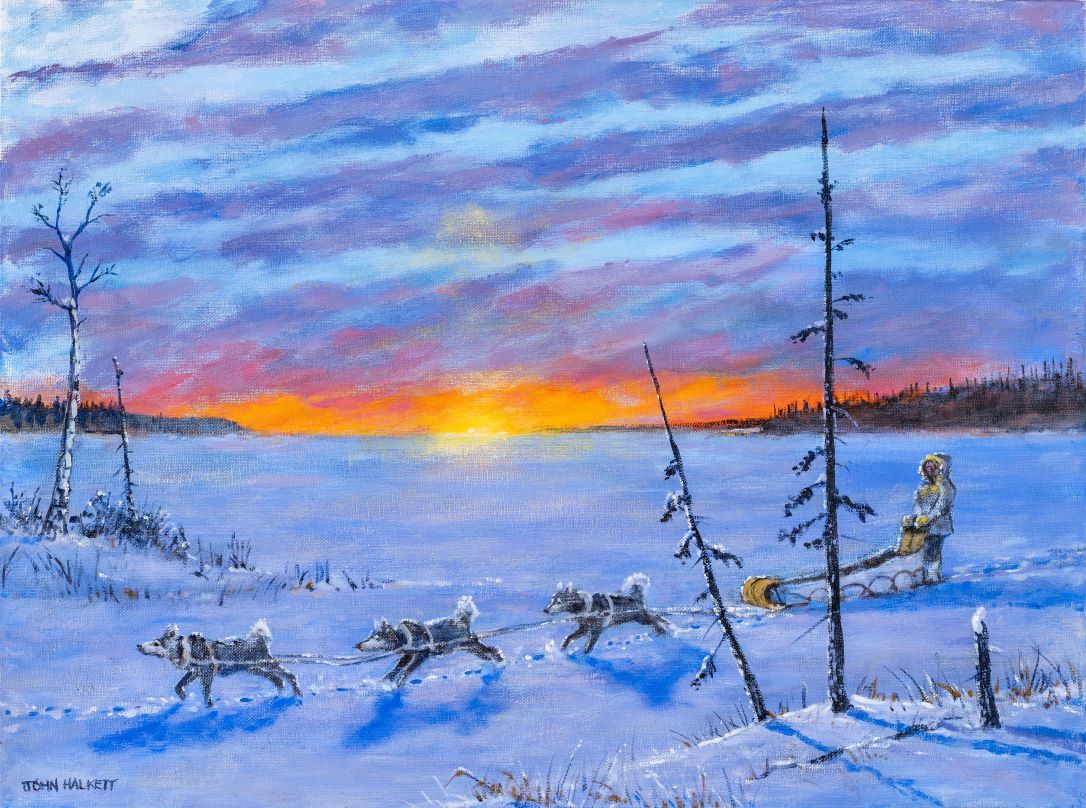
Art exhibition springs from USask dog-human relationship research
An art exhibition featuring representations of the bond between dogs and humans, and based on work led by a University of Saskatchewan (USask) researcher, will be unveiled at Wanuskewin before touring the province for two years.
By Matt Olson, Research Profile and ImpactPaintings, beadwork, digital illustrations, a story skirt – when Dr. Jordan Woodsworth (DVM, PhD) was completing her graduate studies focused on the dog-human relationship in Northern Saskatchewan and Indigenous communities, a touring art exhibition wasn’t initially in the cards.
“I honestly never would have come up with the idea of integrating art,” Woodsworth said. “It’s a really fabulous opportunity, and unique, in my experience.”

Named Atim Maskikhiy – Cree for “Dog Medicine” – the art exhibition developed from Woodsworth’s research is making an appearance at Wanuskewin on Jan. 20 for three months before touring across Saskatchewan with the support of the Organization of Saskatchewan Art Councils (OSAC). The exhibition serves as the first public event supported through the Wanuskewin Institute, which is a partnership between USask and Wanuskewin Heritage Park.
Funding to support Cree translations of artist vignettes and the gallery launch event at Wanuskewin has been provided through Knowledge Translation funding from the Saskatchewan Network Environments for Indigenous Health Research (SK-NEIHR).
Woodsworth, who is also the director of Northern Engagement and Community Outreach with the dean’s office at the Western College of Veterinary Medicine (WCVM), wanted her PhD research to focus on dogs in the La Ronge area where she had built strong relationships while providing biannual veterinary clinics since 2014.
Titled “Healthy Dogs Healthy Communities,” Woodsworth and Dr. Tasha Epp’s (PhD, DVM) research grew after a meeting with Elder John Halkett, who suggested to her a project that focused on educating people both in and outside of the community on what dog-human relationships have been in the past and what they still can be now. Part of their project, Woodsworth said, was to challenge misconceptions about how dogs in Northern Saskatchewan are treated – or mistreated.
“The team really wanted to know, how do people think about their dogs? How do people regard that relationship? How do they define it? What are the things that make that relationship healthy and safe, or don’t?” Woodsworth said. “What are the systemic things in place that are either supporting or challenging the healthy and safety of the dog-human relationship?”
Woodsworth and team members from the Tri-communities collaborated to conduct interviews with area residents on the topic of dogs and the dog-human relationship – dog owners, humane society members, animal protection officers, dog mushers, people with historical knowledge of how dogs were used on traplines, and many more.
It wasn’t until after the preliminary findings were developed that a research team member offered the idea of enlisting local artists to create pieces of art reflecting results of the research. This innovative idea inspired 17 community artists to create 20 art pieces in a variety of mediums that are now touring as part of the Atim Maskikhiy / Dog Medicine exhibition.
Woodsworth lauded OSAC and the numerous community artists for adding another dimension to this project, and said she was excited for people around the province to learn more about the dog-human relationship through the educational tools provided alongside the exhibition.
“I hope we get invited to come and talk about the research, and I hope we can get the conversation going, get people putting their thinking caps on and start to consider what it might look like for community care to be incorporated into how dogs get cared for and managed in Northern Indigenous communities,” she said.
Tickets for the event can be found at the link here.
Together, we will undertake the research the world needs. We invite you to join by supporting critical research at USask.

